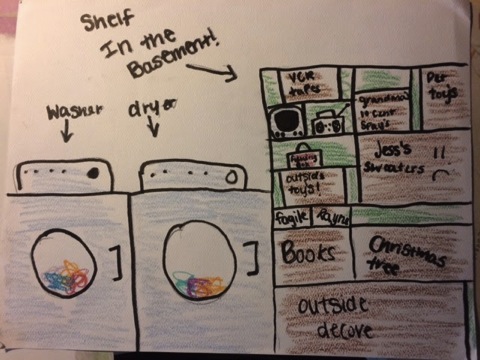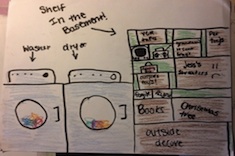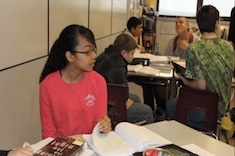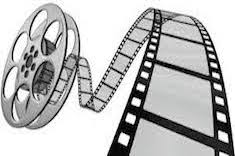I love seeing funny people perform. I regularly watch Jimmy Fallon on The Tonight Show, Inside Amy Schumer, and Saturday Night Live. Although it takes a talented performer to get the delivery just right, behind all of these funny people and shows are teams of writers. Humor boils down to good writing. It’s a craft that can be studied, learned, and honed. Not everyone can be funny in person, but everyone can learn to be funny on paper.
Humor Is About the Unexpected
Much of what makes us laugh is when we think something is going in one direction and then it ends up taking us somewhere we weren’t expecting to go. In his book Humor Writing: Activities for the English Classroom, Bruce A. Goebel recommends starting students out with some basic humor techniques, such as the rule of three, reversals, and misdirection. These are simple techniques that give students the opportunity to play around with humor patterns.
The rule of three is a list of three ideas or things, in which the first item sets up the expectation, the second item confirms it, and the third item turns the expectation on its head. One way to get students practicing this method is to ask them to review a movie using three descriptors, two that go together and a third that the reader wouldn’t expect. Erika reviewed Deadpool using the rule of three: “You’ll love Deadpool if you’re into comic books, superheroes, and tasteless, profane gore.”
Reversals and misdirection are similar in that they take common stereotypes, cliches, and sayings and change them in surprising ways. A simple way to practice this technique is to take well-known sayings and aphorisms and have students write new endings for them. The sentence starters “If at first you don’t succeed . . .” and “The early bird . . .” inspired these student responses:
If at first you don’t succeed, just go back to bed.
The early bird is cranky from lack of sleep.
When writing a humorous essay, these little tricks can be great strategies for getting a laugh in a lead or packing a final punch in a conclusion.
Humor Is About Voice
Another important aspect of creating humor is using the right voice. This can be an elusive concept for students, so the best way to discover how writers create a humorous voice is to read something funny and look carefully at what the writer did. The young adult novel Peak by Roland Smith has a funny 14-year-old boy as a narrator. Together we read the first three pages of the book where he introduces himself, looking at how sentence structures, punctuation, and word choice contribute to the humor. The students notice how the author uses parentheses in the middle or at the end of sentences to create asides, where it feels like the character is talking to the reader in a conspiratorial tone. The casual word choice and short, choppy sentences also give the writing a conversational feel, making it sound as if the character were having an offhand chat with the reader. All of these are techniques that my students and I can “steal” and use in our own writing.
We also read the essay “What Do Women Really Do in the Bathroom?” to glean more humor techniques. In this essay, students notice how the writer begins with a formal tone and sophisticated vocabulary to discuss a very silly topic: bathroom use. The contrast creates the humor because of the unexpectedness of it. This essay also uses a lot of rhetorical questions to develop humor. Again, both techniques are things we can consider in our own writing.
After reading some models, students try out a humorous essay of their own. I give them the option of either exploring an answer to a “dumb” question or choosing a topic, such as a famous person, event, or thing, and making humorous observations about it. After our practice and model texts, students have a list of strategies to apply in their writing.
In her essay about whether it’s better to stay young or grow up, Lily wrote the following:
There is nothing I hate more than when an adult complains about their rough life and tells me to stay young forever, but then goes ahead and tells me to grow up when I’ve done something stupid. (Actually, more important things like murder or animal abuse are at the top of my hate list, but still.)
She clearly picked up on the strategy of using parenthetical asides to create a conversational, humorous tone.
Faith wrote an essay making observations about mimes in which she used rhetorical questions, exaggeration, and short sentences to create humor:
What is the point of a mime? Except to be rude, that is. They don’t even answer when spoken to! I am in no way, shape, or form a violent person, but mimes push me over the edge. After a minute into a “conversation” with a mime I am ready to slap that painted smile right off its face!
In her essay about hypothetical situations, Kayle used the rule of three and a parenthetical aside:
Without hypothetical situations there would be no daydreaming, no what-ifs, and no Trump for president (because years ago that situation would have been purely hypothetical!).
Humor Is Not Just for Adults
Another great model for humor writing is picture books. My young daughters love Drew Daywalt’s books The Day the Crayons Quit and The Day the Crayons Came Home. As I read them aloud at bedtime one evening, I realized what great mentor texts they are for creating a humorous tone, and I took them to school the next day. My high school students laughed at the books just as much as my daughters did and were quickly able to zero in on some of the ways Daywalt’s voice came through in the writing, through the use of underlining, capitalization, ellipses, and exclamation points. I asked students to choose a possession, such as a cell phone, a car, or a book bag, and think about what it might want to say to them if it could talk. What would it be fed up with? To accompany the letter from the possession, I also had students create an illustration.
Here is a letter that Jessica wrote in the voice of a box of her winter sweaters, trying out some of Daywalt’s techniques:
Dear Jess,
Just a little note reminding you we’re still here for you. That’s right: Us, YOUR SWEATERS! The ones you’ve abandoned in the basement since the move LAST OCTOBER!! Any time you’re ready, you can find us adjacent to the box of VCR tapes and directly beneath the boxes of pet toys and Grandma’s ten cent knickknacks.
Please come quick before the worst happens . . . we go OUT OF STYLE!!
Love,
Your Potentially Moth-Eaten Box of Sweaters

When Silly Is Smart
Humor writing might seem silly, but it is a unique opportunity to study craft, to take on a different voice, and (perhaps most importantly) to have fun with writing. But there is risk involved with being funny: What if people don’t laugh? This risk is intensified when working with self-conscious adolescents; therefore, humor writing is best executed at the end of the year when the classroom community is such that students are comfortable sharing their failed attempts. And believe me, there will be many of those. Take, for instance, the twenty-odd sentences I deleted in an attempt to end this article with something funny. I guess being funny is harder than I thought.






